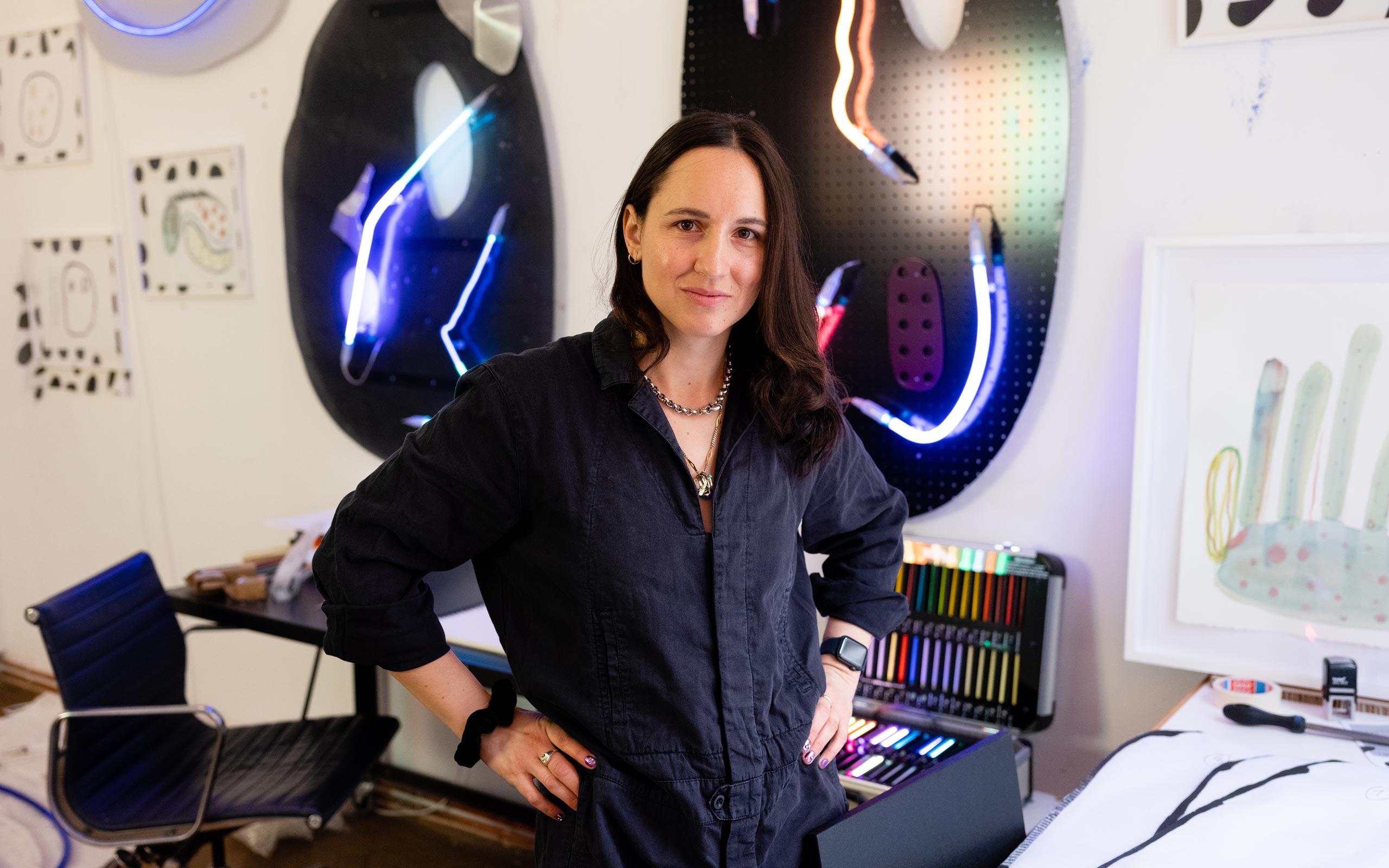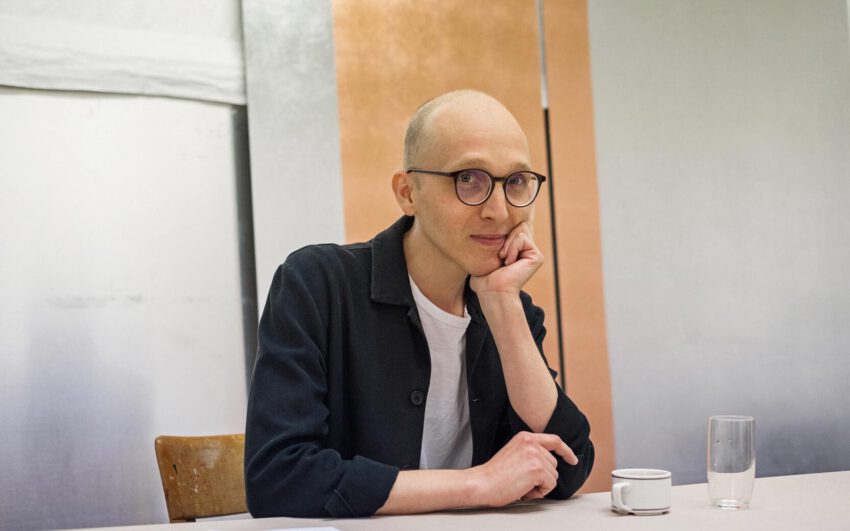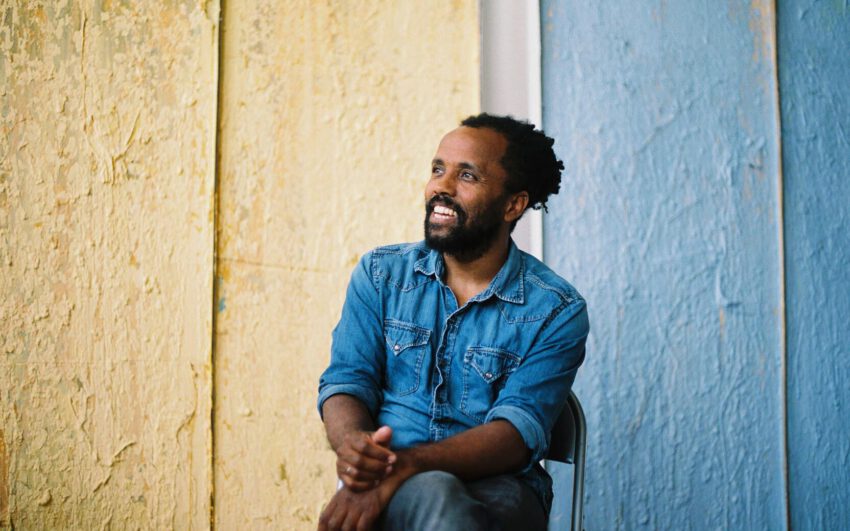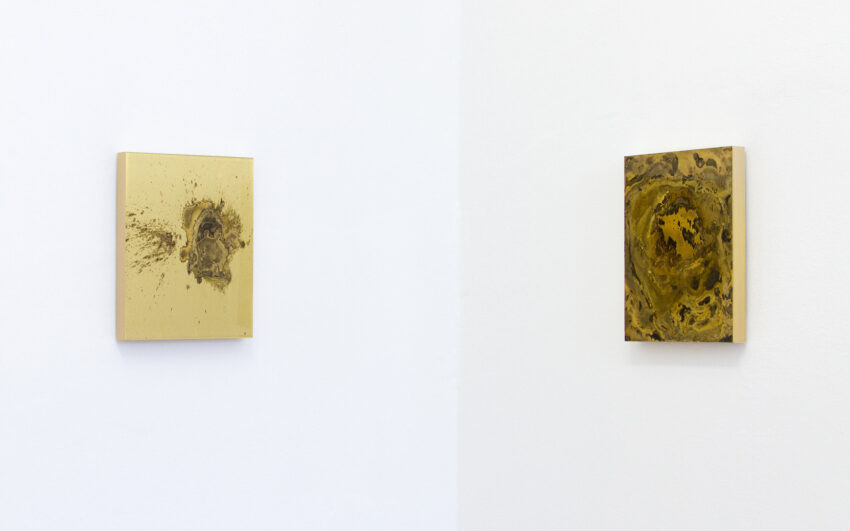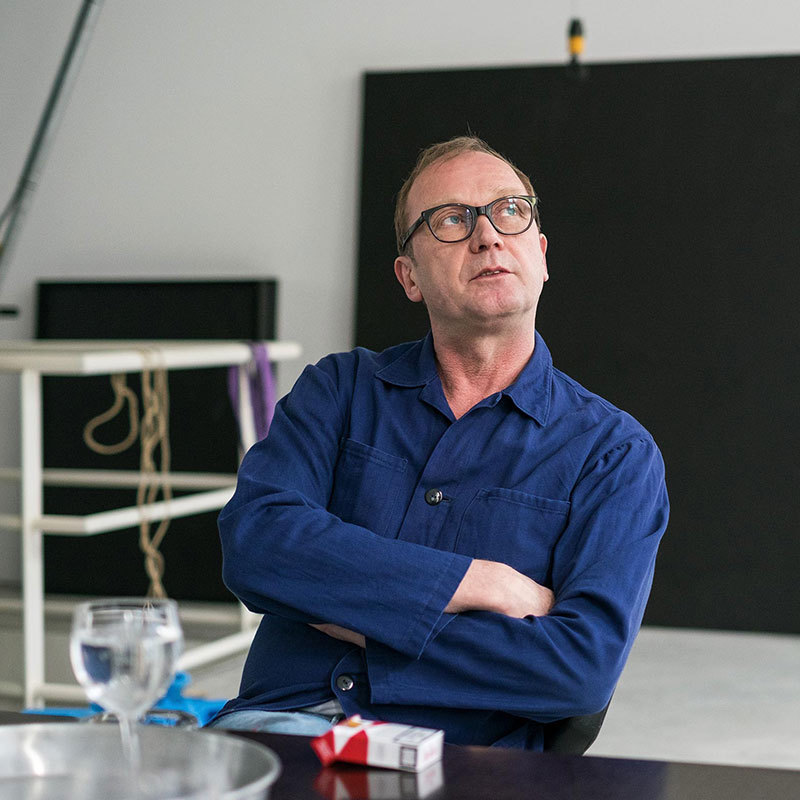Visual artist Raphaela Riepl sensitively examines the dispersion of light in space. Through an understanding of drawing, she creates atmospheric spaces by means of her neon works the impact of which is the experience of a special dialog between space, time, and light formed by her conscious contrasting of various materials.
Raphaela, in your studio we are surrounded by various lighting moods that create a very special atmosphere. How did light become your medium?
It began the year before I graduated from the Academy of Fine Arts in Vienna (2010), I had spent three months in New York working in the studio of light artist Keith Sonnier, among others. After graduating from the Academy, I went back to work with the Open Source Gallery. At that time, I had already considered working with a different medium, because I felt that I hadn’t yet found my own medium. By chance I ended up in a glass and neon workshop and subsequently worked for several years in a neon workshop where we produced numerous installations for artists, and for fashionable stores in addition to displays for large department stores and I gained a familiarity with the medium and its uses. When I returned to Vienna, it became clear to me that it was the medium that interested me most deeply particularly in terms of line and how that relates to draftsmanship, so it became no longer simply a medium that I used for other people, rather it had become my medium.
The path to your chosen medium was a long one, but even when you were very young, you knew you wanted to be an artist.
I always had a lot to do with art; my family is very interested in art and in Linz, contemporary art was very much present for me. From that perspective, it wasn’t a bold course, because it was already in my environment, and it was part of how I grew up. I think that it was when I realized the many possibilities of how one might go one’s own way or invent one’s own way as you might say. Basically, anything can be achieved in art; that was a very liberating and inspiring thought for me.
What made you decide to study art in Vienna?
It was rather pragmatic and not necessarily that I wanted to return to Vienna. I was more interested in other countries, for example at one point I was in Paris during my studies. At the academy itself, I was in the graphics/printmaking class, which was very open and free in terms of how you could develop; and Gunter Damisch and Veronika Dirnhofer, who led the class, were very supportive. An important fundamental for me was drawing as a direct medium and it is still for me a means of expression offering an immediacy in the capturing of spontaneous ideas.
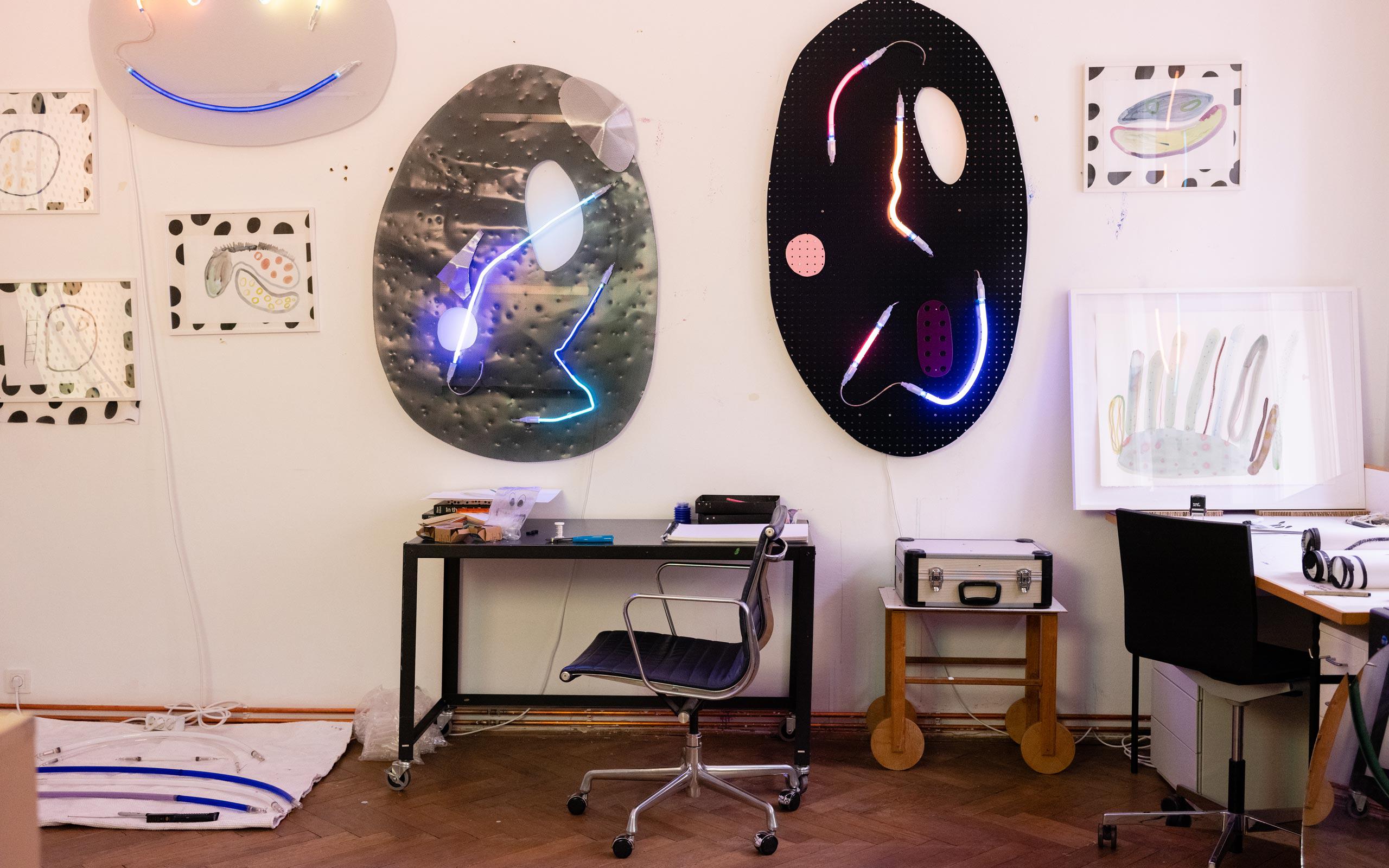
Drawing continues to be a fundamental element of your work. What significance does it have in your neon works?
Not in the sense that I make sketches for my neon works, I actually never really make sketches, but neon works are drawings in space, starting out also from the line. That is, neon are lines and are either attached to image carriers, which are then also part of the object, or they float as lines freely in space. What I find exciting about this kind of drawing is that in daylight, white light, the drawing is very present and when it gets dark, the scattered light becomes more present. When there is no daylight, it looks atmospheric, and the mood is in the foreground and the lines fade into the background. That’s where I find the moment of that change very interesting. The atmospheric aspect is also about the diffusion of light because it goes out from the boundaries of the light body and is quite ethereal, and this is the point at which the question arises, where does the work begin, and where does it end?
Can you elaborate on how you respond to a space and create atmosphere?
I find it very exciting to respond to the peculiarities of a room, to what already exists, what the basic architecture is like, whether there are any arches or windows. In some works, the room sets the framework, or my works continue from found forms, the architecture of the space, its mood and in what way I want to shape it, what it should trigger in the viewer when they enter is a paramount question. With light you can create such an ambience or a variety of atmospheres, including artificial and intimate lighting. It is always an experiment: on the one hand every work functions differently in every room, which has a lot to do with the incidence of light and the conditions, and on the other hand it is also about how the lines function and how the lighting mood works in the different lighting situations. This is about an intuitive process, but at the same time it has to do with my experience with installations and experiments in the studio. But in itself you can never conceive it so precisely; in another space the works may have quite a different effect, so it can never be planned completely. So, it remains an exciting moment when the power is switched on in the space, how the light works, and how it can be seen to transform the environment.
Is it also a game in terms of what you want to trigger, how colors may affect someone?
It is certainly a game; however, it is quite variable to what degree someone may be affected, I can only comment from my own sensibilities, how others are affected depends on the individual. Some feel comfortable in certain environments and the given light moods, others may feel discomfort, which is not my intention. Color interpretations have no relevance to me because they differ culturally and on an individual basis since everyone has a unique relationship to color. In itself, I almost always work abstractly, and the space creates for each its own sensation and perceptibility. As far as my work is concerned, I am not concerned with fixed perceptions of it.
It sounds very liberating, particularly from the point of view of how viewers can react to your work.
Yes, I do appreciate reactions, but not specific ones. It is very important to me that a democratic access to my work is possible. I am pleased when the installations touch people who have no prior knowledge of my work, or even of art in general. One association I have heard from time to time from viewers is that my works are reminiscent of archetypes, a section of something that you might see under a microscope. I think that’s nice, but it’s not my intention. For me it’s more like zooming into something, like into an emotion or other form of perception, it’s about essentials in general.
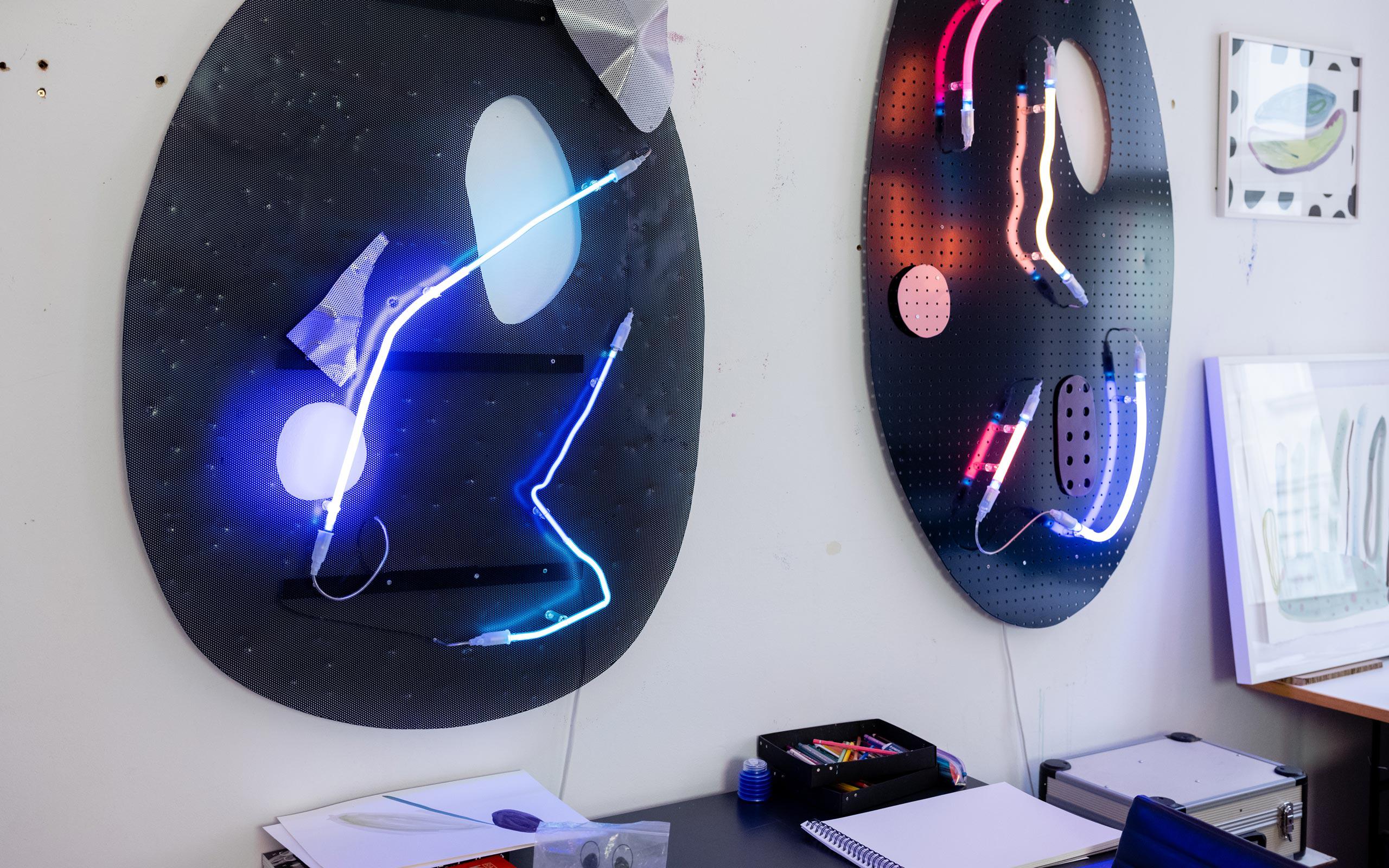
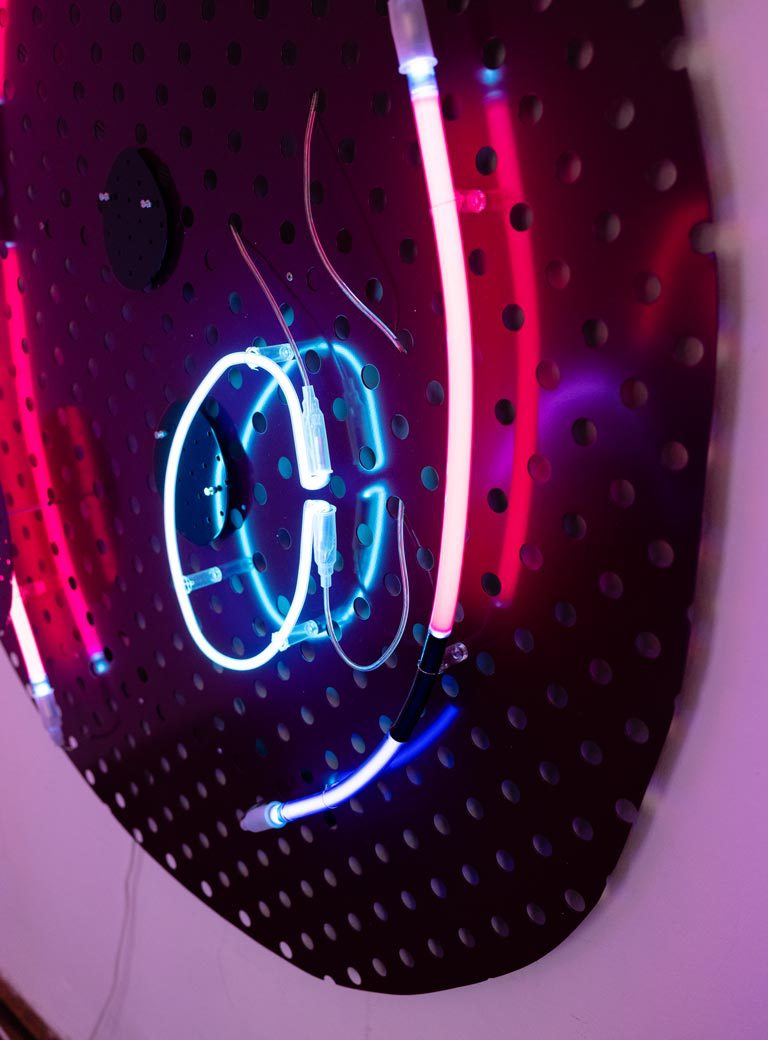
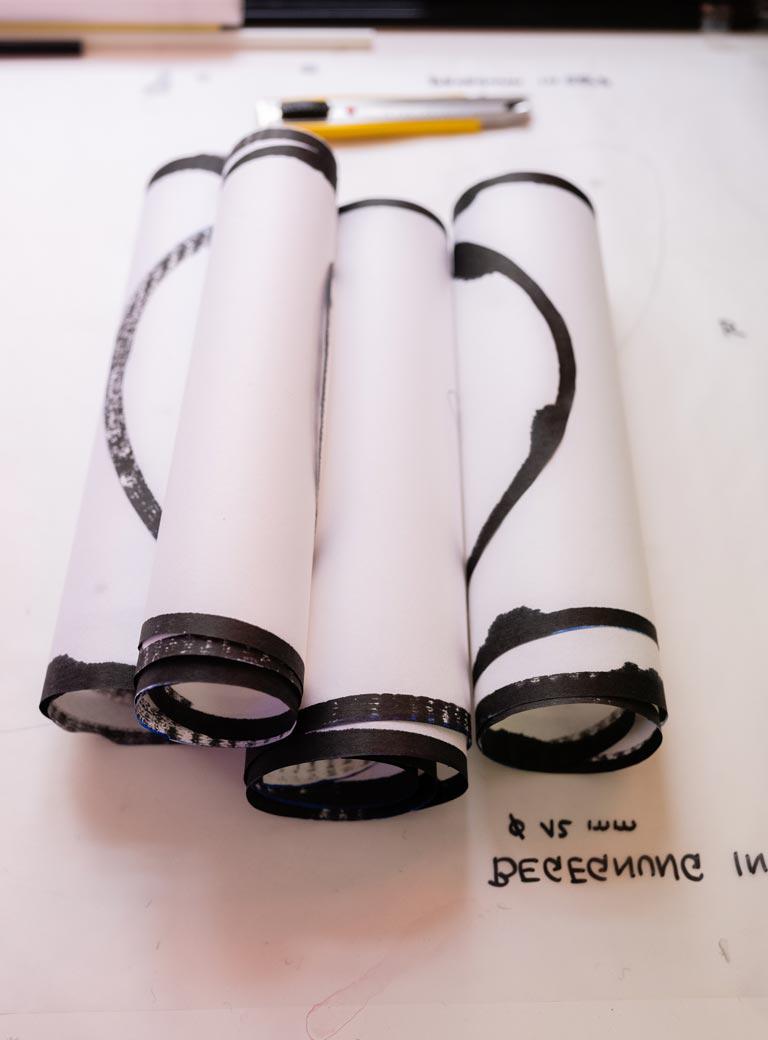
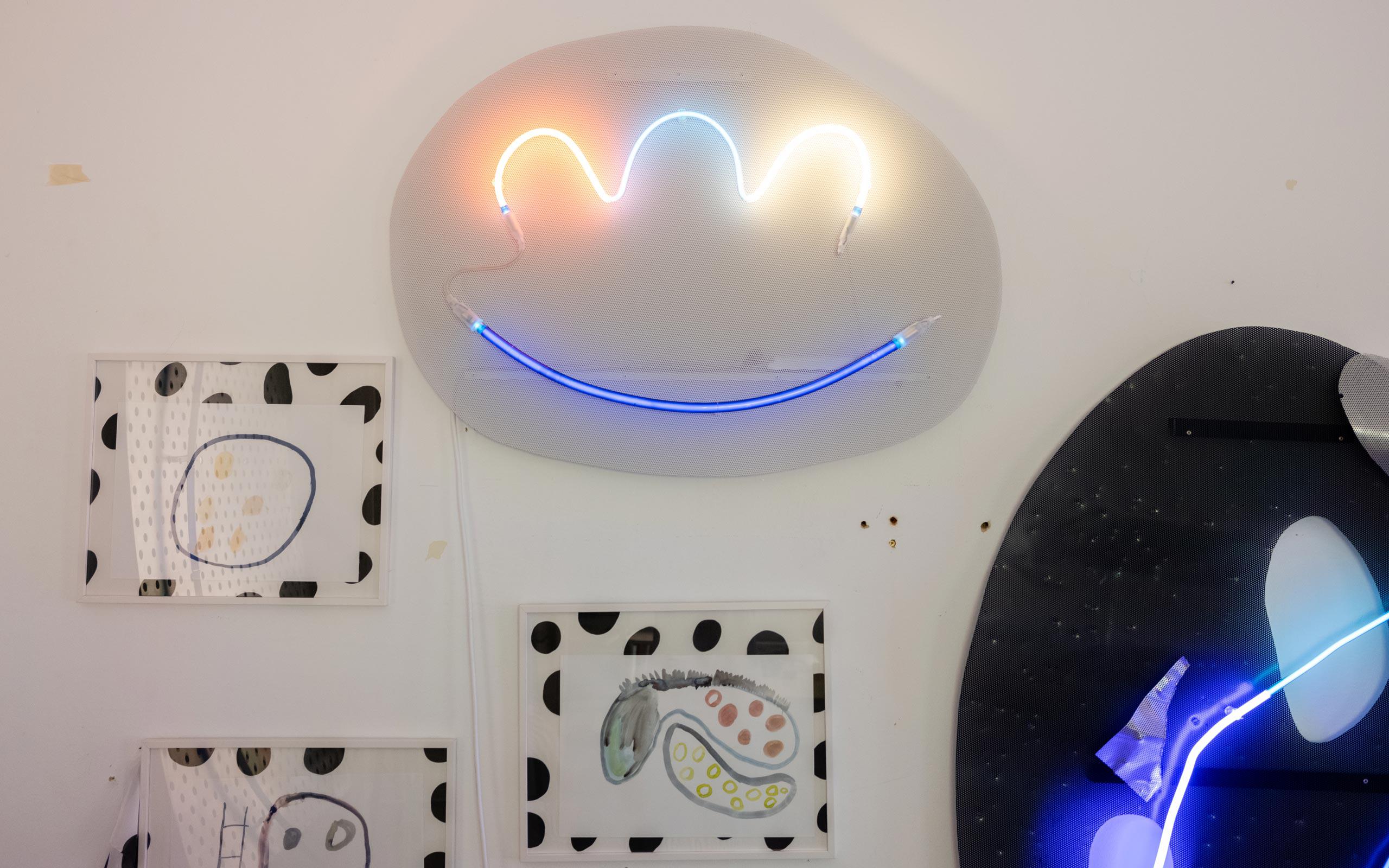
How do you approach a work?
Before I begin to work, I am considering many socio-political topics. But when I then start working, I don’t process this directly in my works, but rather I find expression of something that is already internally in process. My focus is on what is happening in me right now, without really catching it in a rational thought, but allowing what is there at the moment and letting myself go with it. If I notice that I am falling into a pattern or into something too rational, I try to interrupt it in order to remain in the area of the sensory. Here, my main concern is to avoid categorization or rationalizing. In order to be able to work in this way, however, it is very important to me to question a lot before and after the active work. Are our actions shaped by social norms that are not reflected by our personal attitudes? What have we accepted from a cultural perspective without having consciously decided upon it as individuals. I believe it very important to question these things and to uncover other unconscious biases in order to make changes possible – and in doing so to eliminate discrimination.
So, there are no particular themes that are presented?
The works do not contain an expression of a specific theme. For me, it’s about omitting such themes and their inherent limitations, it’s more concerned with inclusion.
Do you form the many shapes of the neon tubes yourself?
No, I work with a workshop. There are first drawings, ink on baking paper, and then I order tubes and show how they are to be produced. Either I decide on a colored glass or one that is coated with pigments, or sometimes both. Then there are various gases sealed inside the tubes that also have an impact. So, several decision-making processes flow into it for me. The recent works have come out of a lot of lines and drawings. There’s a collage-like moment where I have a lot of elements lying around and I then try to see how they fit together, and the spontaneity that the drawing actually possesses is also preserved. And right until the end, it’s also about how the line is… even though it has already been reformed and infused with gas, its placement, but that constitutes a separate process in which it remains alive until the end.
Materiality plays a big role for you, doesn’t it?
Yes, that’s very important. The haptic, how it feels and how the materials work together. Or how the light can be reflected in the metal starting from the tubes and with which color the reflections change; with the dark, the radiation is partially absorbed more, but the line is reflected. With the light, the radiation is much more visible. That is, if it is coated, then the light is reflected quite differently. It’s also about pushing the materials to the limit. So, the play with light never stops, even in connection with space, how much the space becomes part of the work. It’s always a feeling and an exploration of what is possible; I find it to be a constantly exciting field of research.
That sounds like a very exploratory approach.
Yes, exactly. I find it totally exciting to explore light, materials, their interplay and the atmosphere in a room. I’m also very excited about exploring my own ideas and limitations, breaking them down and trying out the unfamiliar. Through experimentation, questions can arise, or you can research with the media in all directions without pursuing a particular thesis. I like this freedom.
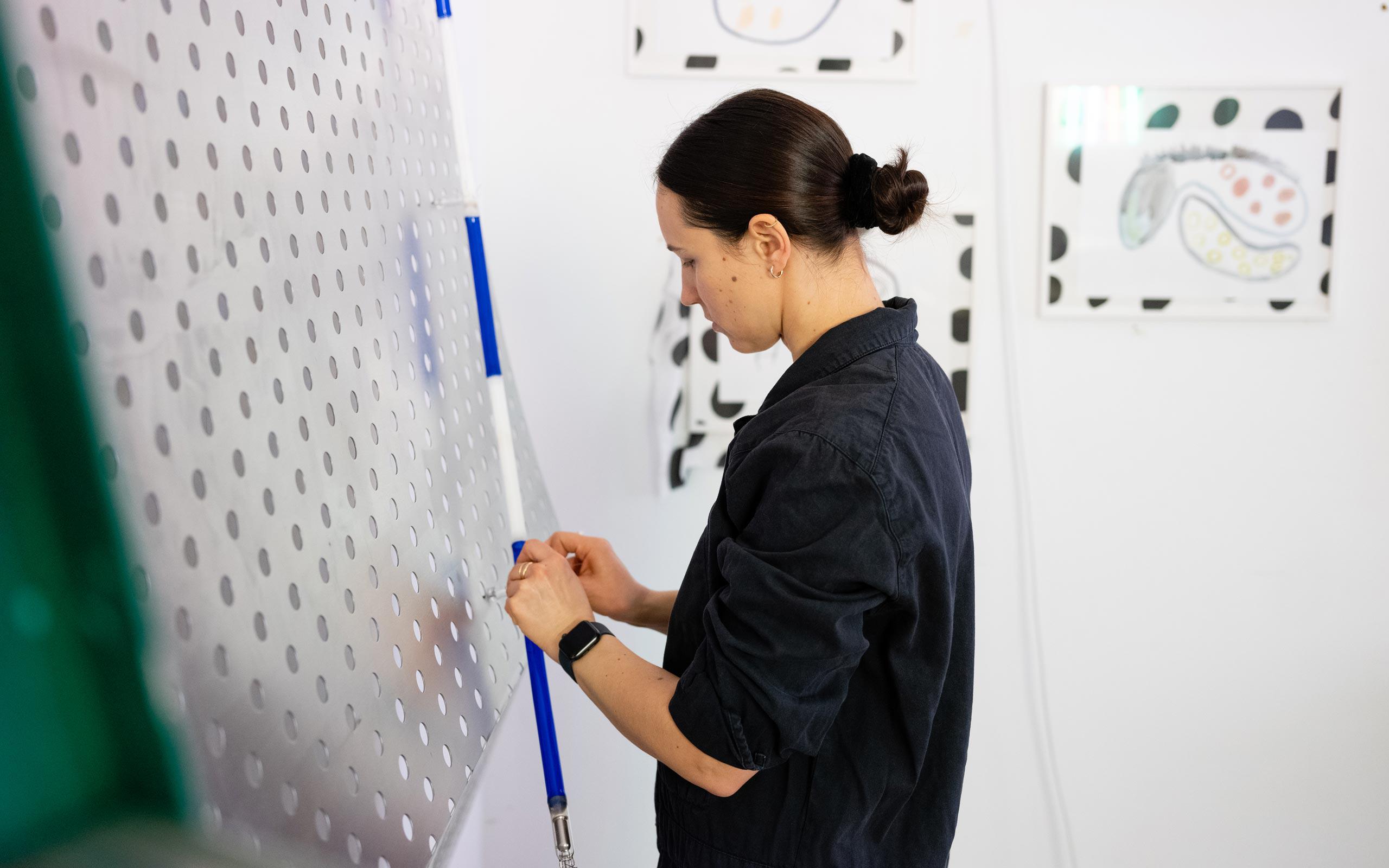
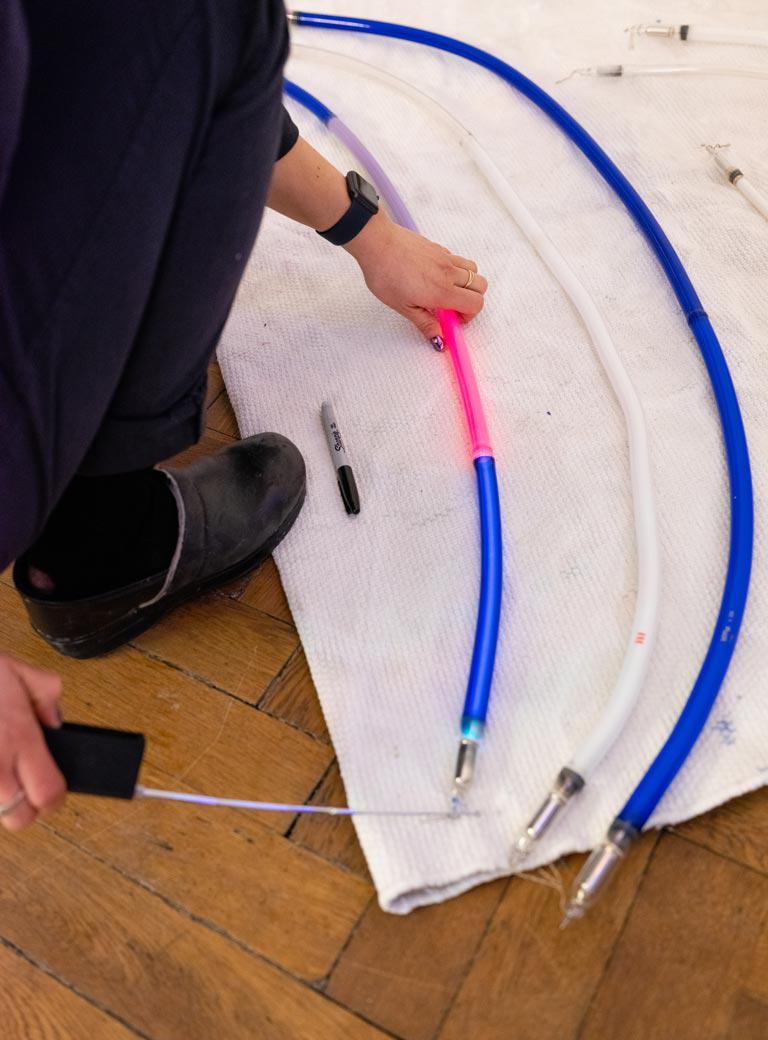
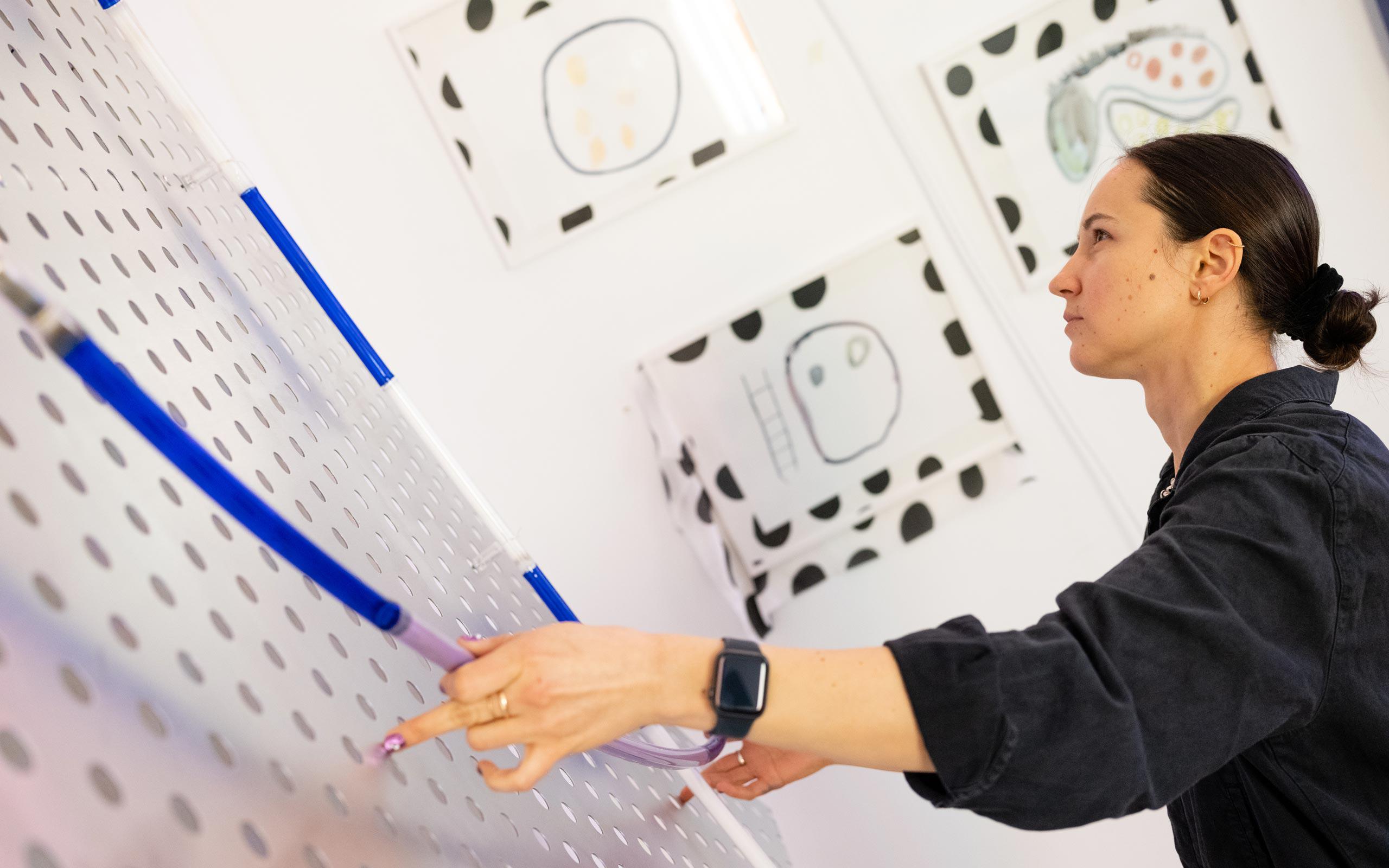
In the studio we also see fabric panels. How do you use textiles?
I like to work with textiles, as spatially installed, almost organic elements, they function in a painterly way and the material itself contributes a lot. It started with a silk fabric several meters long, which I painted with dots. There I was concerned with the material, how the silk flows and can thus also form a contrast to metal and glass. Through the soft structure, can arise movement with each gust of wind. The light and shadow moments, or the permeability I also find exciting. I also have colored canvases, which I juxtapose with the neon.
How would you describe your art in a few words to someone who doesn’t know it?
It is a game with the material and the ethereal, a drawing in space. There are the objects, and also the intangible through the light and the scattering of light. It is about an atmospheric experience in space.
What motivates you in your work?
It’s all very open in the work and research, and that’s a motivation for me... When I notice that something is closing up, or as I mentioned earlier, when you get into habitual patterns, I’m interested in opening it up again. This opening and experimenting is very important to me.
Are there other light artists whose work you appreciate?
Light art in general interests me a lot. The research and the spatial effects of the works. I also find the theoretical discussion of the subject (e.g., by Robert Irwin) exciting. Artists who fascinate me in particular, however, are not necessarily light artists, they include Isa Genzken and Agnes Martin.
Do you actually see yourself as a light artist?
I wouldn’t deny it, but I’m all about open-minded thinking and I’m not so keen on having the medium designated in my job title, so to speak. Personally, I’d rather simply say artist, but having said that, I do work a lot with light and it is a medium that really captivates me.
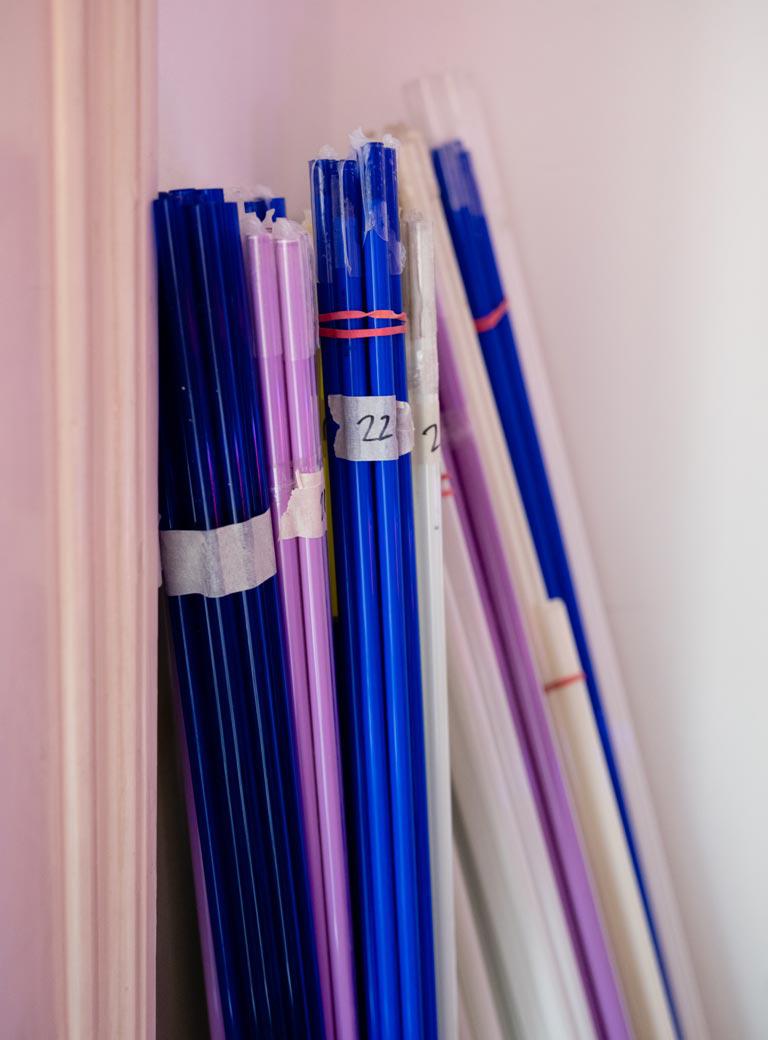
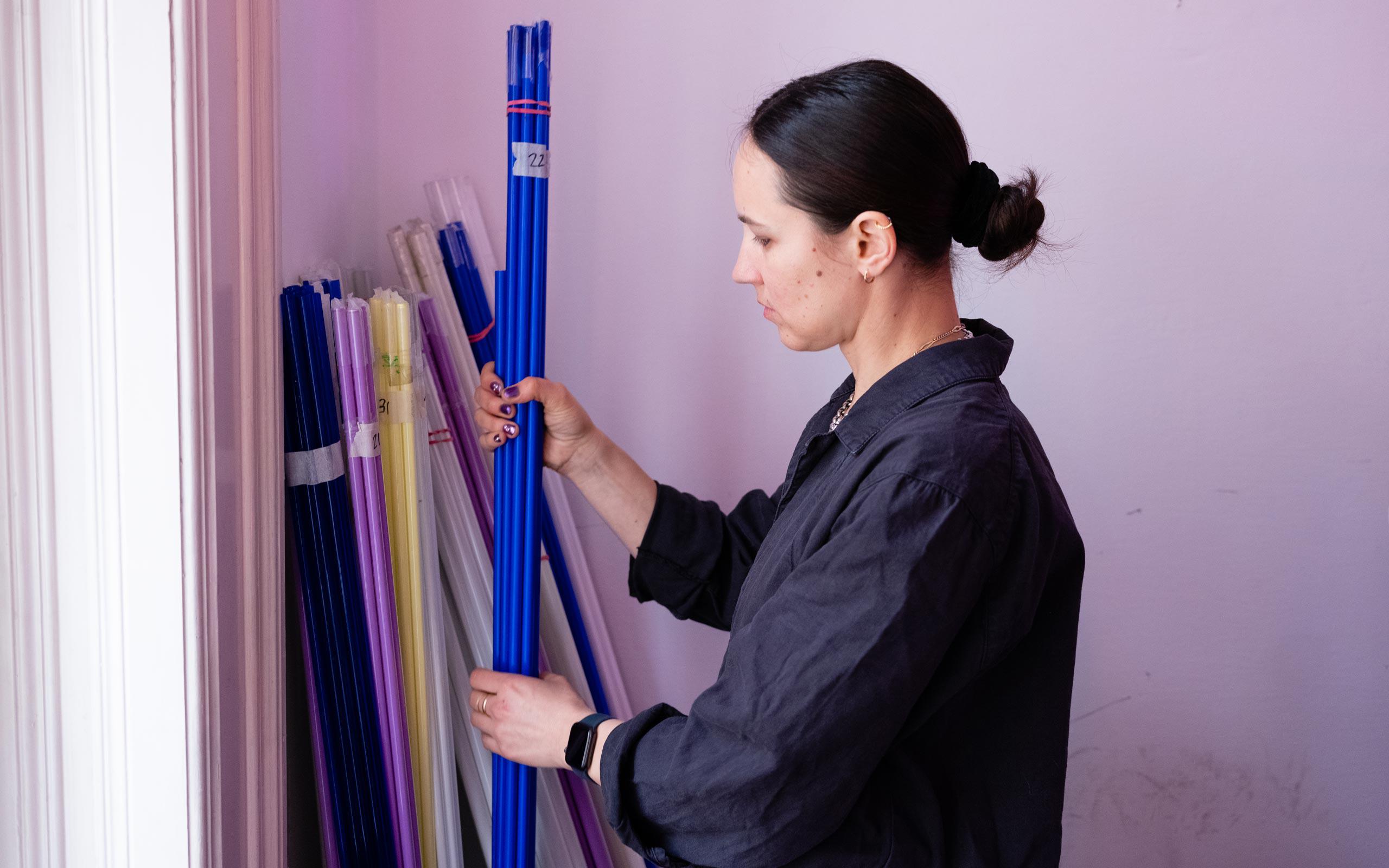
What is the significance of your art in the here and now?
If it touches or inspires people to see things in a different way, or to open up to something different from what they are used to, that’s nice. My aim is to create inspiring spaces that motivate people in a variety of ways or to develop new thoughts.
What artistic issues are you working on, what projects do you have coming up?
On the one hand I am working on more compact, installation pieces, without knowing concretely where they will be exactly. And then I am planning an installation for Klanglicht (Light and Sound Festival 2023) in Graz. Together with Julia Haugeneder and Stephanie Winter, there will be a group exhibition in the fall, curated by Sophia Vonier, and next year with Galerie 3 a solo exhibition. One question that is very much on my mind right now is that of community. In a collaborative project with a friend and artist, Khira Jordan, we would like to combine text and sound by her and spatial installation work by me. We both lived in Fort Greene, Brooklyn and met in a nail salon. In reference to our personal history, but also as exemplary as a place for exchange and coming together of a community, we want to create a place where interaction can take place.
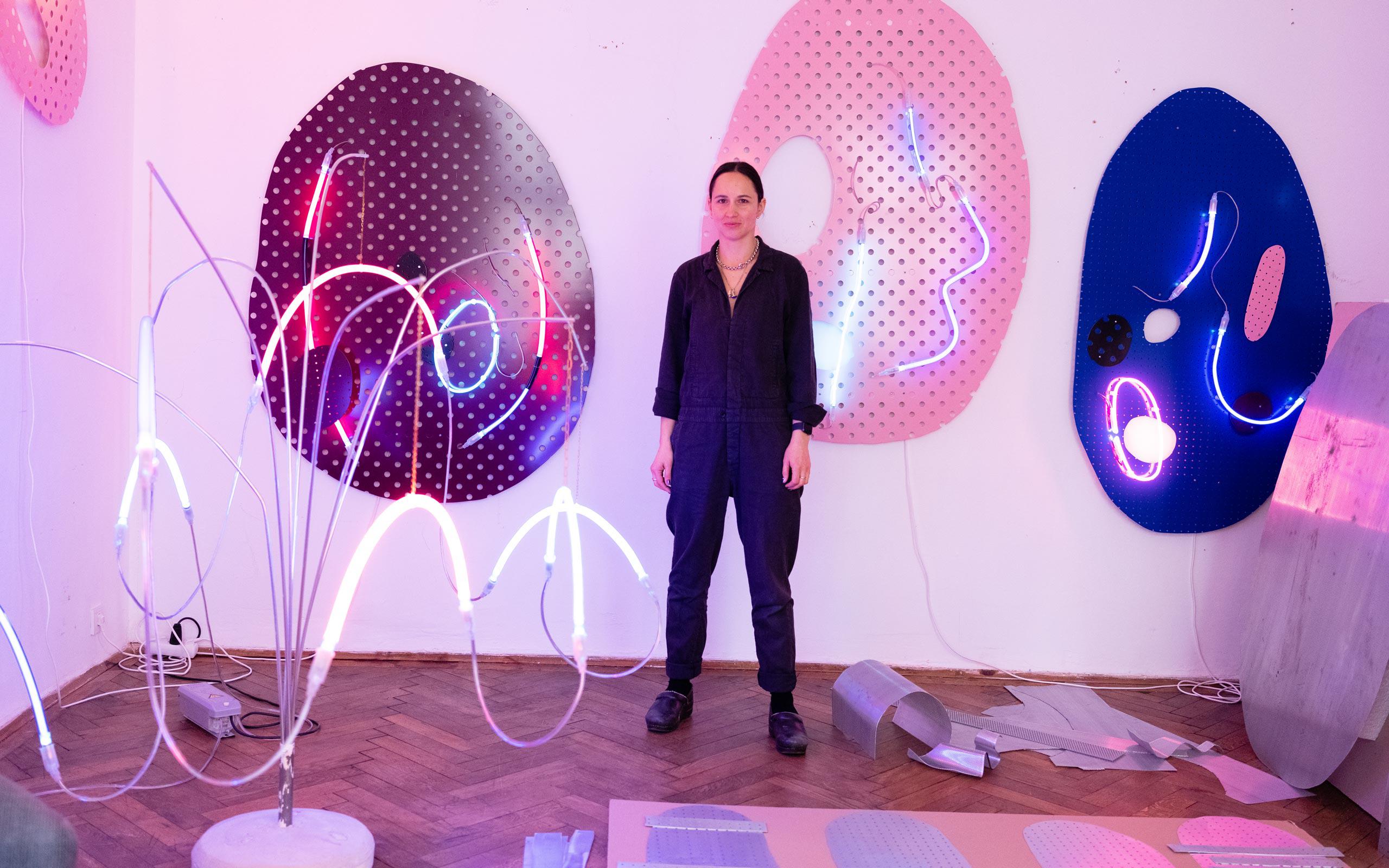
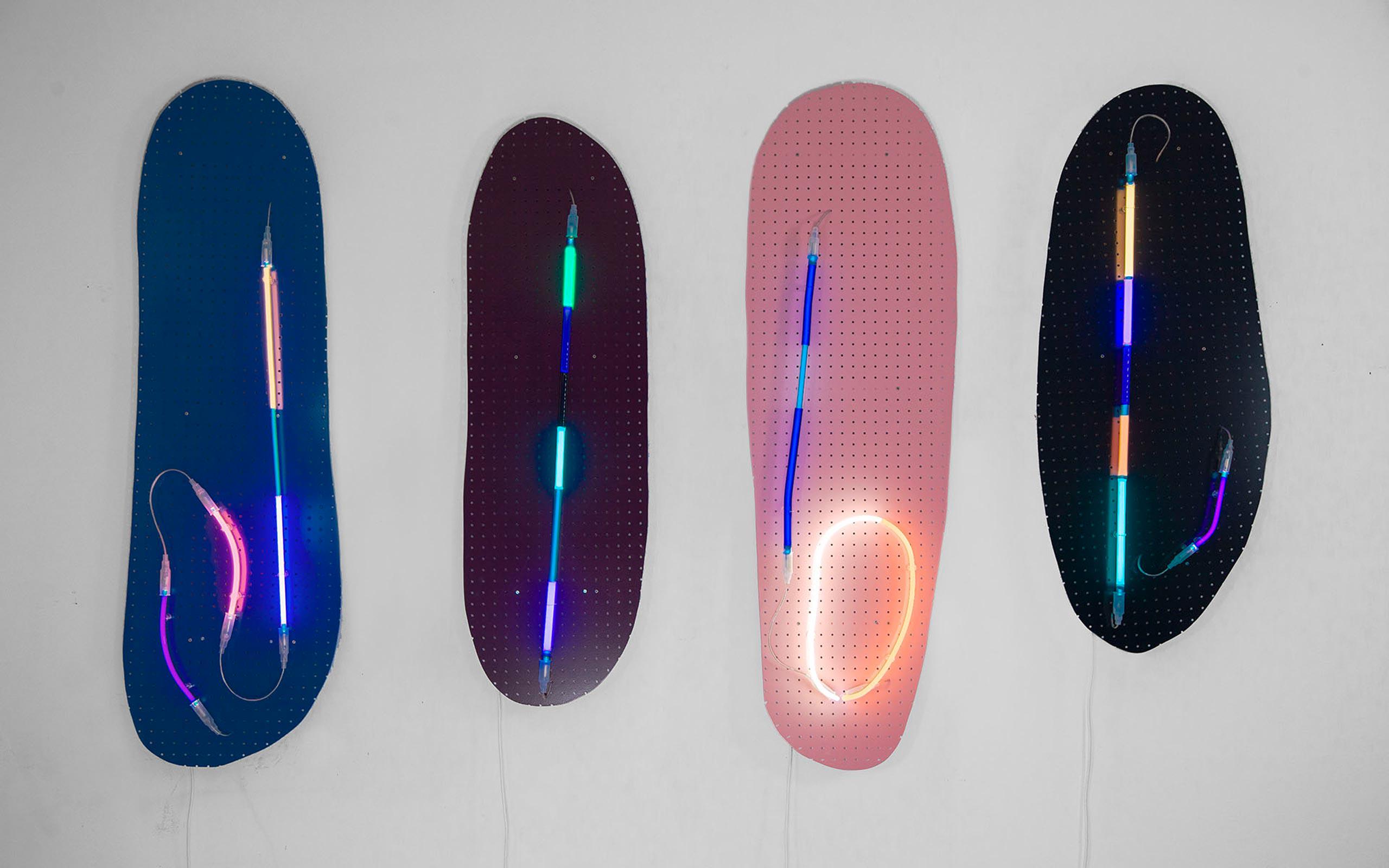
Flavored Blue, 2022, neon, transformer, electric cable, powder coated aluminum, hardware, 150 x 47 x 8 cm, Flavored Red, 2022, neon, transformer, electric cable, powder coated aluminum, hardware, 131 x 41 x 8 cm, Flavored Pink, 2022, neon, transformer, electric cable, powder coated aluminum, hardware, 153 x 47 x 8 cm, Flavored Black, 2022, neon, transformer, electric cable, powder coated aluminum, hardware, 126 x 52 x 8 cm, Installation view at the studio, Beyond Flavor, Photo: Serafin Spitzer
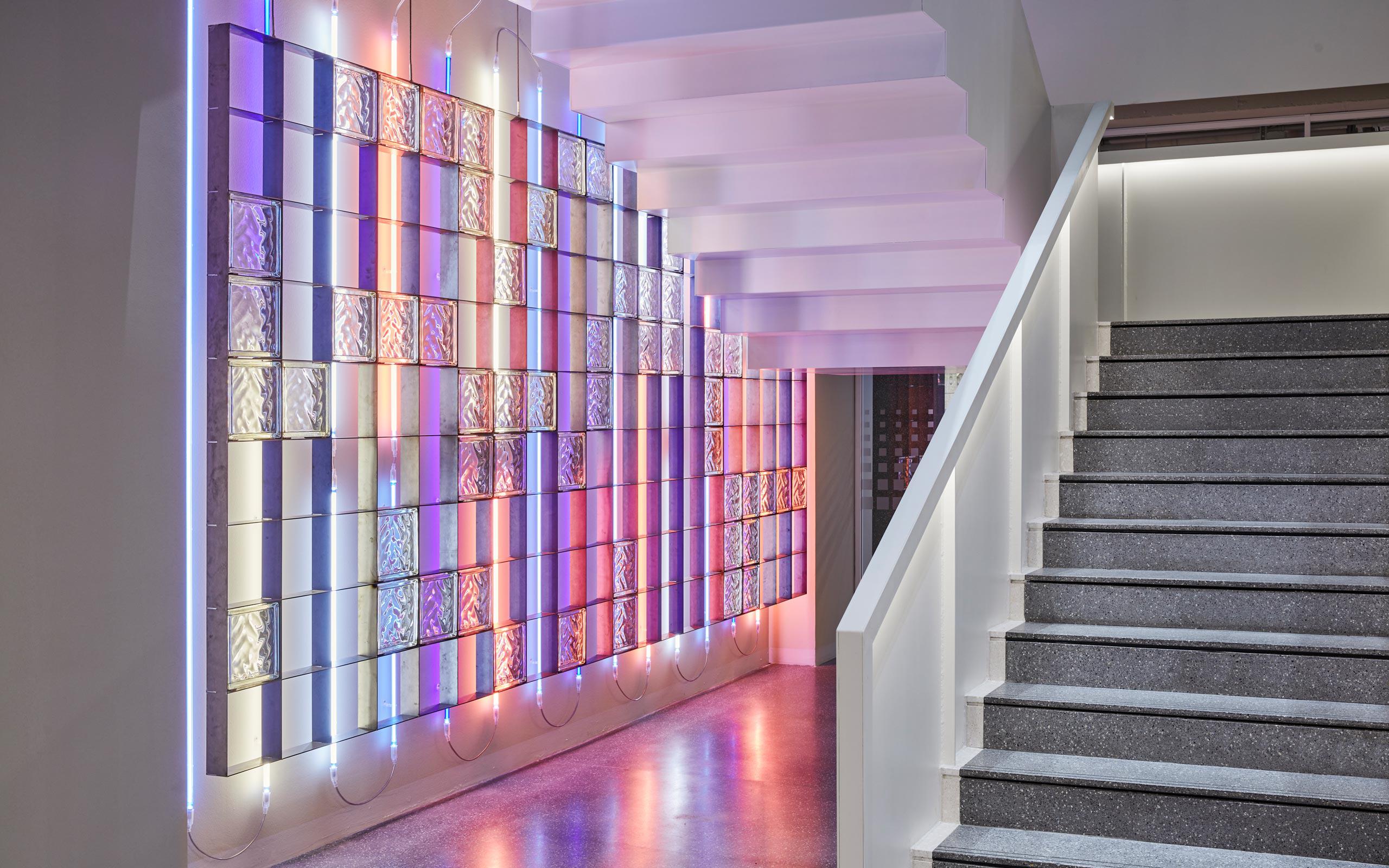
Permanent installation, OK.kunZT, Klagenfurt, Galerie3, Architektur: Buerger Katsota, Unscattering & Scatterings, 2022, neon, transformer, electric cable, steel, glass, 540 x 350 x 30 cm, Photo: Johannes Puch

Permanent installation, OK.kunZT, Klagenfurt, Galerie3, Architektur: Buerger Katsota, Unscattering & Scatterings, 2022, neon, transformer, electric cable, steel, glass, 540 x 350 x 30 cm, Photo: Johannes Puch
Interview: Marieluise Röttger
Photos: Christoph Liebentritt


